St Dunstan in London and Somerset – Part 2: London
Some Christian saints are real historic figures and some are mythical. Some saints are real but have mythical events attributed to them. Dunstan (c.909 – 988) has both. He really did exist and yet the most famous legend linked to him is nothing more than a devilishly imagined story (see ‘St Dunstan in London and Somerset – Part 1’).
I went on a walking holiday in the Mendip Hills and Somerset recently and, as usual, whilst staying away from London I looked for some local stories that had connections to London. Dunstan was born in Somerset, became Abbot of Glastonbury Abbey and then Bishop of Worcester before progressing to even higher office. He eventually became Archbishop of Canterbury, but before that he was the Bishop of London.
We explored the saint’s Somerset and Wessex origins and his rise to ecclesiastic power in ‘St Dunstan in London and Somerset – Part 1.’ The focus in this post is on Dunstan’s legacy in London.
Two churches within the City of London are dedicated to St Dunstan. Just east of the City in Stepney is the ancient church of St Dunstan and All Saints. In Greater London there are a further seven churches dedicated to St Dunstan, as well as seventeen roads and three educational establishments.
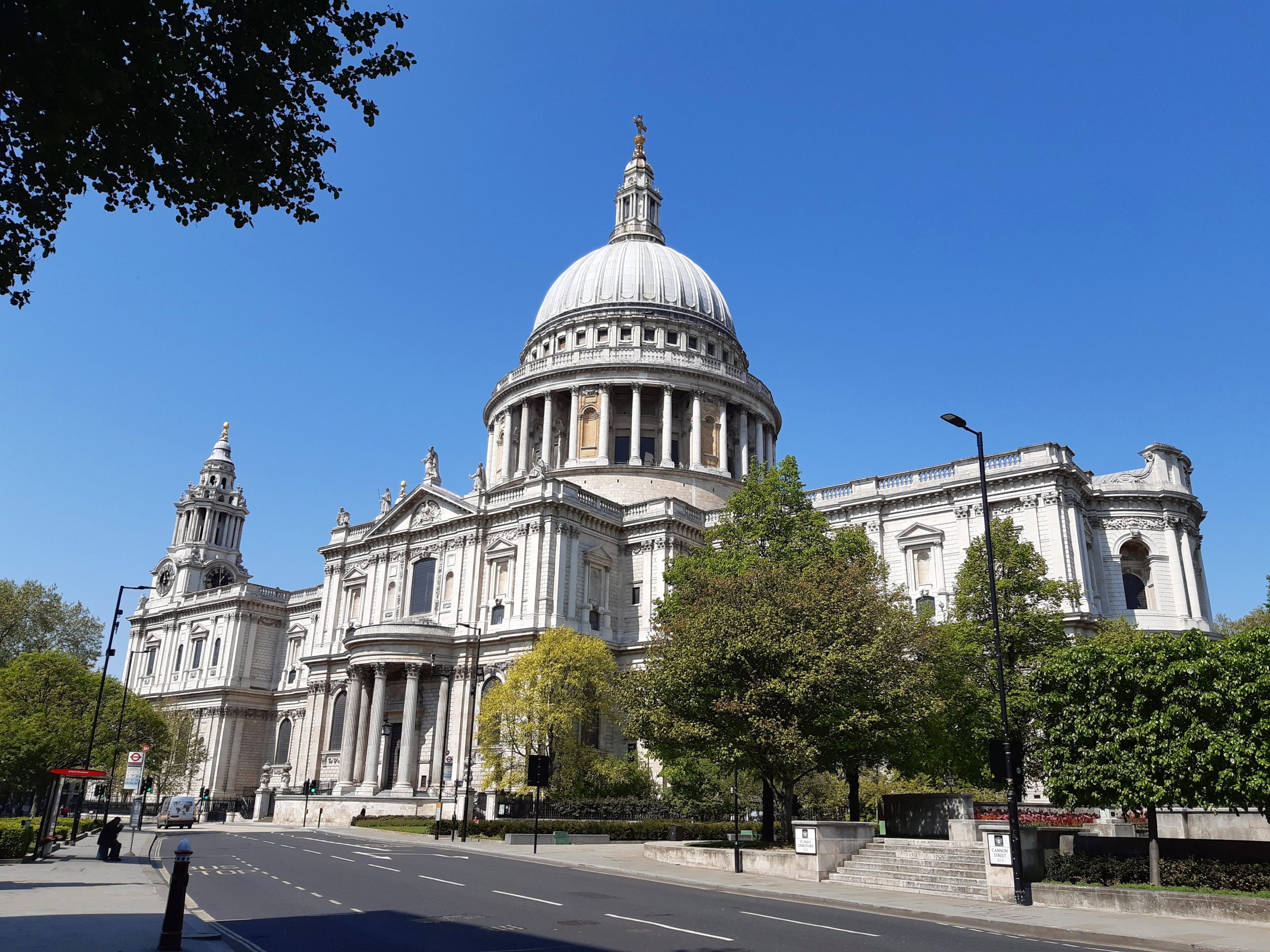
St Paul’s Cathedral
St Paul’s Cathedral, London EC4.
St Dunstan became Bishop of London in 958 whilst still fulfilling his role as Bishop of Worcester. In 959 King Edgar made Dunstan the Archbishop of Canterbury and he visited Rome the following year.
St Paul’s Cathedral is the ‘Mother Church of London’ and seat (cathedra) of the Bishop of London. The Cathedral we know today is the fifth St Paul’s. The fourth St Paul’s, known as Old St Paul’s, was a massive gothic structure some thirty per cent larger than the baroque Cathedral which stands today. It was destroyed during the Great Fire of London in September 1666 having been constructed in 1087, after the third St Paul’s had itself burnt down.
The first St Paul’s in London was dedicated in 604, made of timber and it didn’t last long. The second St Paul’s was re-established in 675, built of stone and we know its re-founder St Erkenwald was buried there in 693. This Cathedral also burnt down – probably destroyed by raiding Danes in 962 – and was replaced by the third Cathedral. Aethelred the Unready was buried here in 1016 and this third Cathedral building is the one Dunstan would have known as Bishop of London. Although we don’t know what it looked like it was probably Romanesque in style and we only assume that it stood where Old St Paul’s and the present Cathedral stand today (some think the earlier versions stood at the site of the present St Peter upon Cornhill, another high point of the City).
The Church of St Dunstan in the East, St Dunstan’s Hill, London EC3.
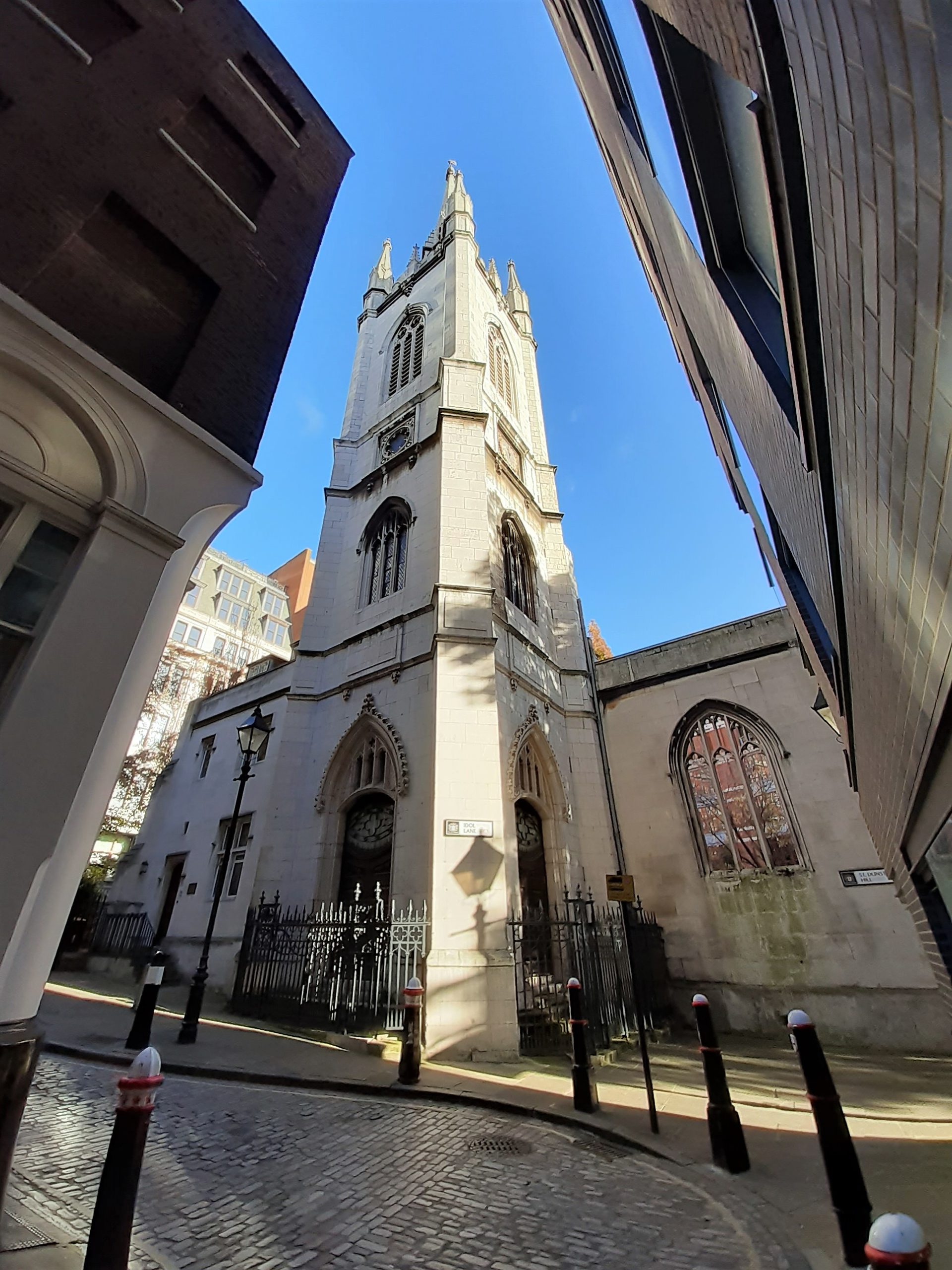
St Dunstan in the East
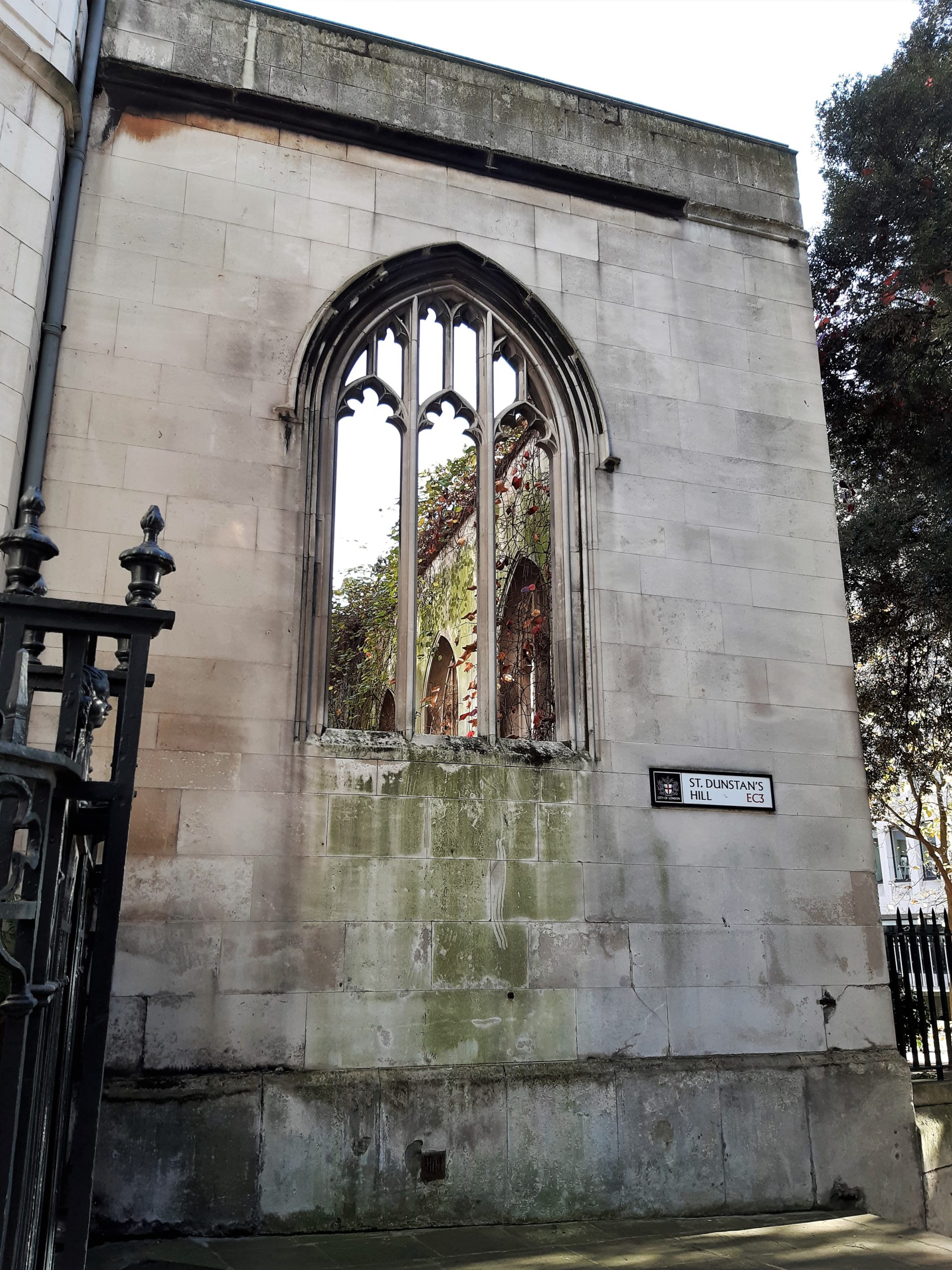
St Dunstan’s Hill
There are claims the first church on this site dates from Saxon times. Despite its disputed origins we know a stone church was built around 1100 in the Gothic style, and substantially repaired in 1631 at a cost of over £2400. St Dunstan in the East was one of the City of London’s wealthier churches. During the Great Fire of London in 1666 its leaded spire was destroyed although the main church survived with little damage. The church stood slightly east of the fire’s origins in Pudding Lane, and the conflagration headed mainly west with the wind.
Following repairs after the Fire a new tower and steeple was eventually added in 1695. Designed by Christopher Wren this is one of the City’s more elaborate and unusual church steeples. From its pinnacle tower a stone lantern shape rises on four flying buttresses, culminating in the formation of a delicate needle spire.
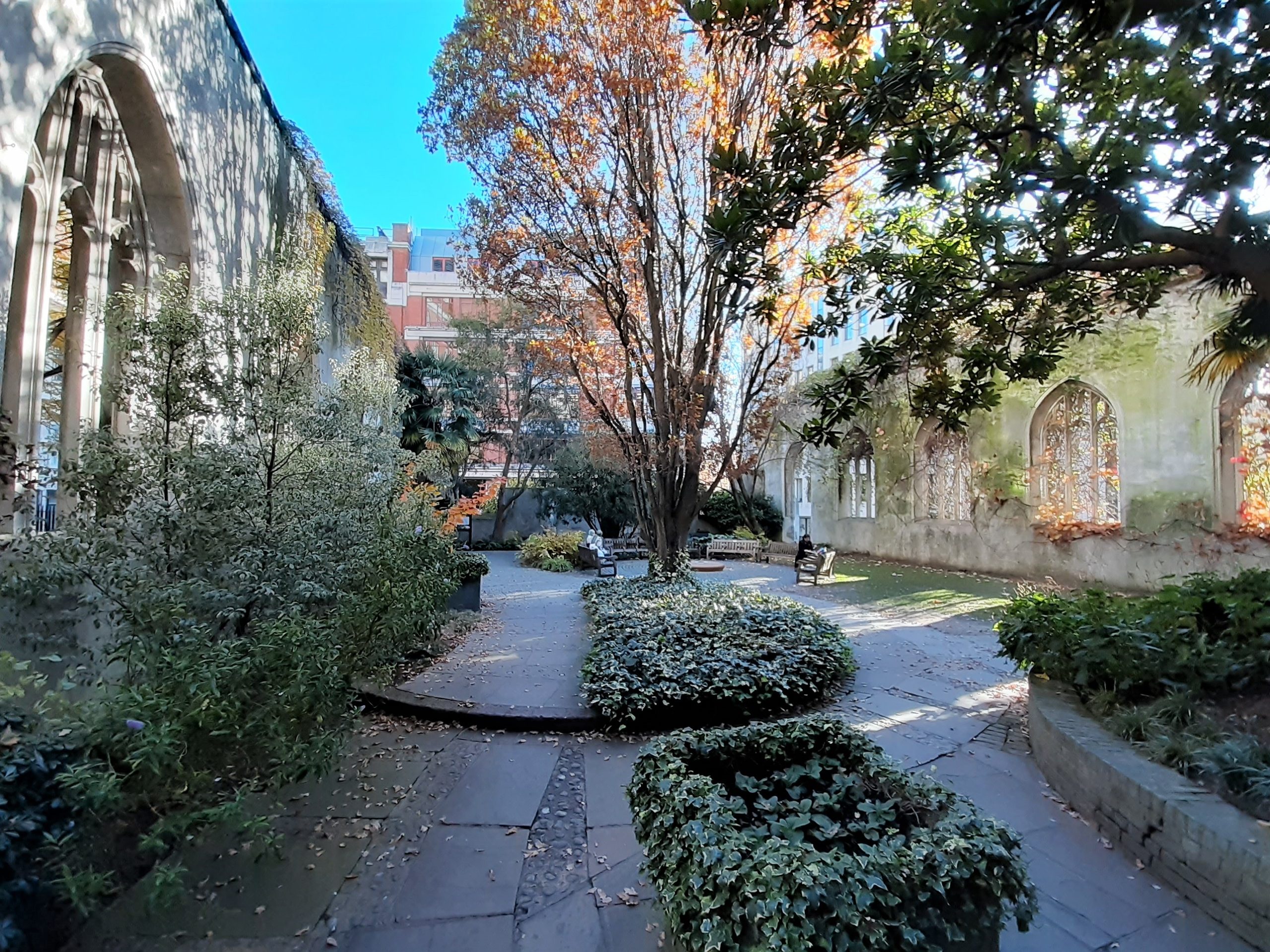
St Dunstan in the East – Garden
It’s said that Wren’s daughter Jane helped with the design as perhaps did Nicholas Hawksmoor, who also received payment. Observing its delicacy and ‘weightlessness’ many people thought the steeple a weak structure – legend says Jane was lifted to the top to fix the final stones and even lay confidently below the props as they were removed. Wren also knew better and when, in 1703, a storm had caused damage to many City spires he is said to have commented ‘not St Dunstan’s, I am sure.’
Unfortunately the original nave had deteriorated so badly by the early 1800s that a new nave was designed and constructed, in the perpendicular style. It was rebuilt of Portland stone and could accommodate almost 700 worshippers.
Unfortunately again, the church was badly damaged during The Blitz in World War Two. Of the nave only the north and south walls remained. Wren’s tower and steeple however survived intact, although it underwent repair in 1953. The City of London Corporation transformed the ruin into a public garden, which was opened in 1967.
Today the modernised tower is used as offices and the garden-within-the-nave still provides a place of relaxation and quiet repose.

St Dunstan in the East – Tower and Steeple

St Dunstan in the East – Plaque: ‘In 1466 the school attached to St Dunstan in the East was one of the five recognised grammar schools in the City of London. The Boys Independent School of St Dunstan’s College was founded at Catford in 1888 on land owned by the parish of St Dunstan in the East.’
The Church of St Dunstan in the West, 186a Fleet Street, London EC4.
The foundation of the church is estimated to be late-10th to mid-11th century although it’s earliest written mention is from late in the 12th century. In 1523 William Tyndale, translator of the Bible into English, preached here and John Donne, poet and later Dean of St Paul’s, was rector during the 1620s. Lord Baltimore, who founded the State of Maryland in the USA, was buried here in 1632.
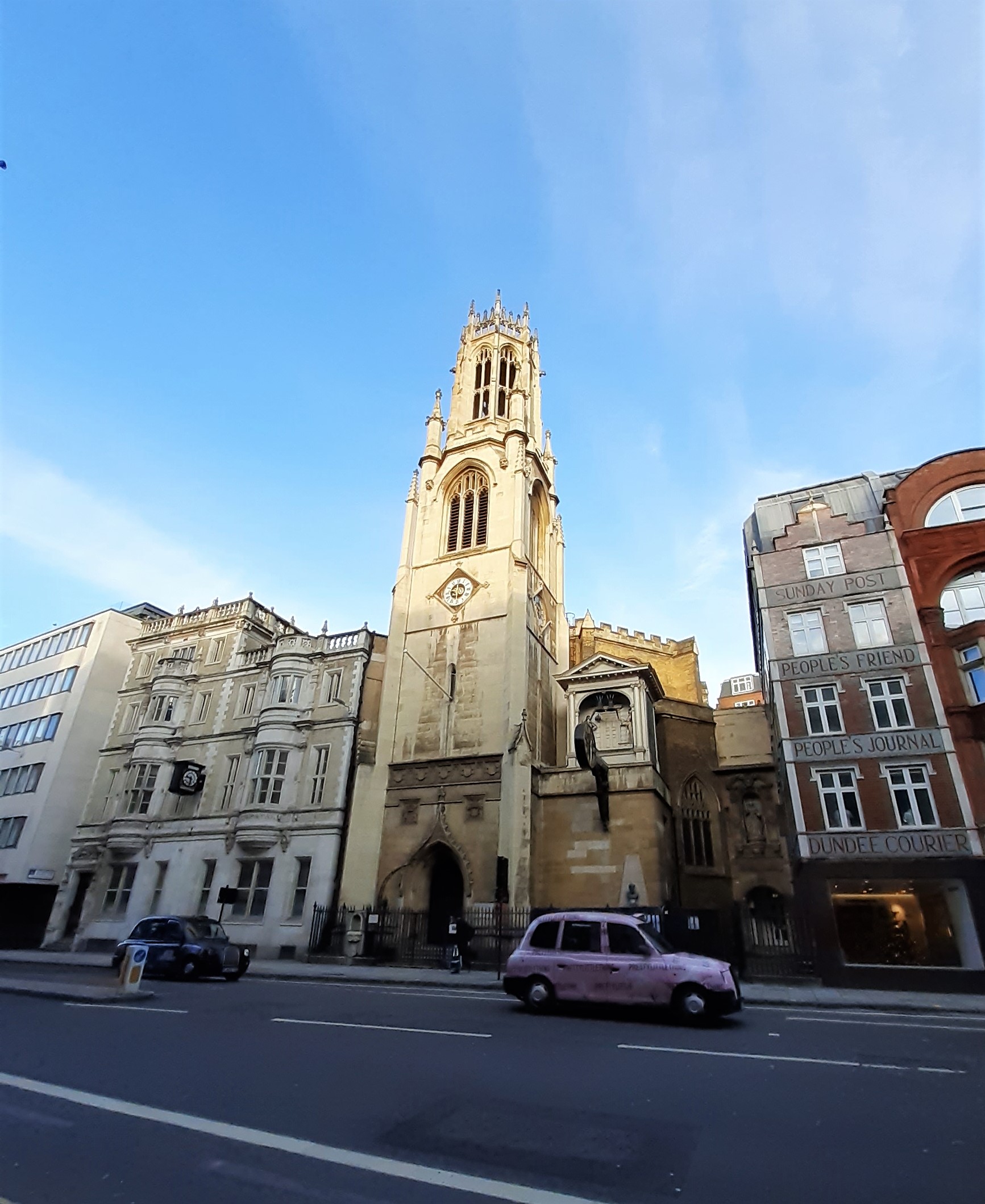
St Dunstan in the West
The Great Fire of London was reaching its western limits in Fleet Street when the church narrowly escaped serious damage. The quick-thinking Dean of Westminster saved the church when he roused forty scholars from Westminster School in the middle of the night, who extinguished approaching flames with buckets of water.
St Dunstan’s also makes a notorious appearance in the diaries of Samuel Pepys – Sunday 18th August 1667:
‘…I walked towards White Hall, but, being wearied, turned into St. Dunstan’s Church, where I heard an able sermon of the minister of the place; and stood by a pretty, modest maid, whom I did labour to take by the hand and the body; but she would not, but got further and further from me; and, at last, I could perceive her to take pins out of her pocket to prick me if I should touch her again – which seeing I did forbear, and was glad I did spy her design. And then I fell to gaze upon another pretty maid in a pew close to me, and she on me; and I did go about to take her by the hand, which she suffered a little and then withdrew. So the sermon ended, and the church broke up, and my amours ended also, and so took coach and home, and there took up my wife, and to Islington with her…’.
By the early 19th century the fabric of St Dunstan’s was in such disrepair that it was demolished, also making room for the widening of Fleet Street. In 1830 the architect John Shaw had a limited space in which to build the new church and so he designed a Gothic revivalist octagonal nave with seven recesses and the alter in the northern recess. The church’s square, yellow Leicestershire Ketton stone tower is crowned by a distinctive octagonal stone lantern, capped by a finely carved pinnacled parapet. The tower was bomb damaged during World War Two and repaired in 1950.
There are some fine external features to this church. Housed in a niche above the vestry door is a stone statue of Queen Elizabeth I. Dated to either 1586 or post-Fire – academics still argue – and originally positioned in the old Ludgate it could be the only extant statue of Elizabeth to survive, if genuinely dated to 1586. In the porch, out of view from the street, are stone statues of mythical pre-Roman King Lud and his sons Androgeus and Theomantius, also from Ludgate – and also from either 1586 or post-Fire (Ludgate was demolished 1760).

St Dunstan in the West – Statue of Queen Elizabeth I
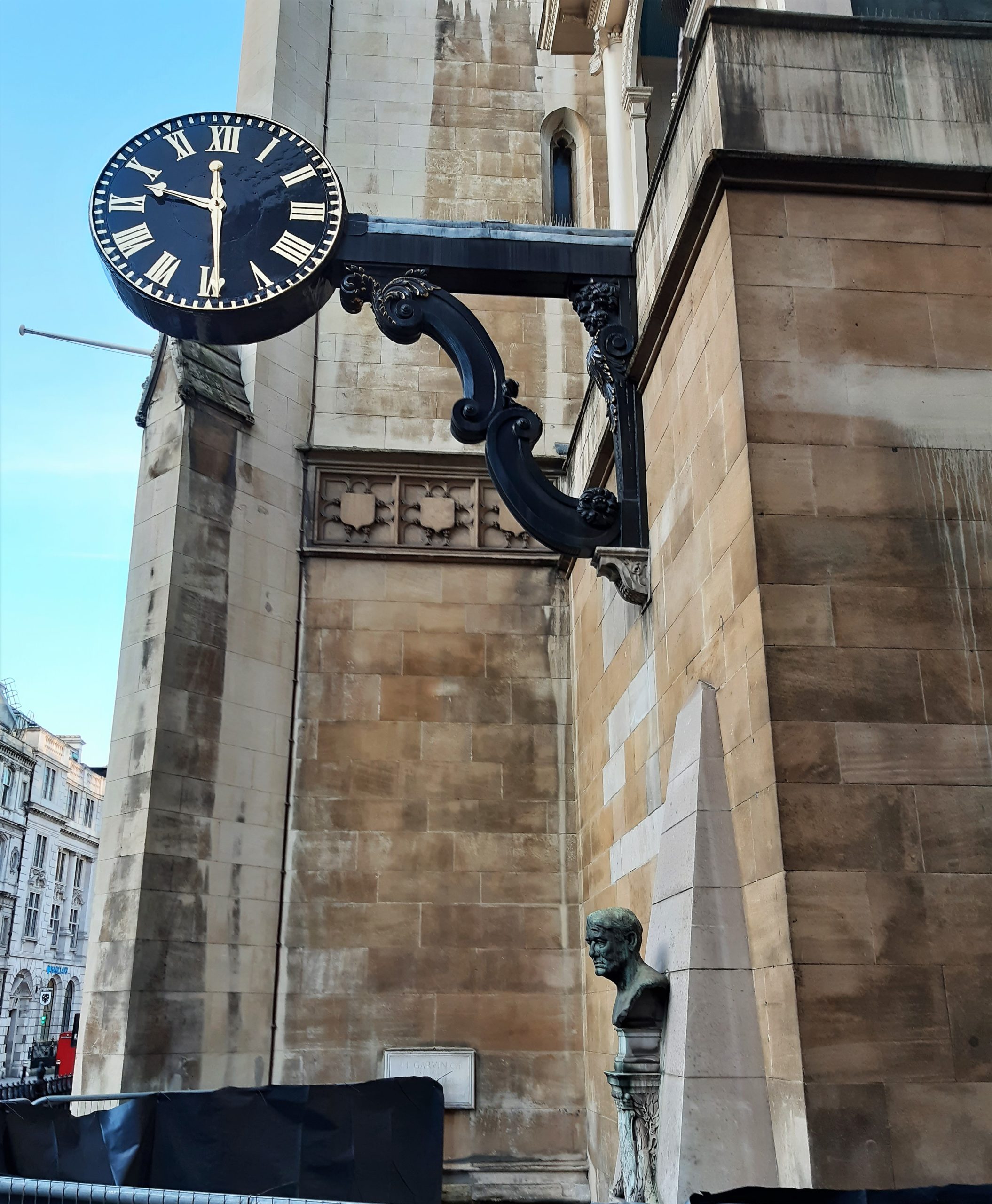
St Dunstan in the West – The Clock and Northcliffe Memorial

St Dunstan in the West – The ‘Savages’ or Gog and Magog?
On the lower wall facing Fleet Street are three more features. At ground level is the bronze Northcliffe Memorial (sculpture by Kathleen Scott with Portland stone obelisk by Edwin Lutyens, 1930). Lord Northcliffe, real name Alfred Harmsworth (1865-1922), was the owner of the Daily Mail, Daily Mirror and The Times. He innovated popular journalism and became incredibly influential and powerful. By 1914 Northcliffe controlled 40% of the morning newspaper circulation, 45% of the evening and 15% of the Sunday circulation in Britain. Fleet Street had been the centre of printing, journalism and then newspaper publishing from the early 1500s until the late 20th century – hence this memorial’s position.
Above eye level is a bracket clock made of wood, with copper, which dates from 1671. Before the 1830 rebuild it projected over Fleet Street and was far more visible. It cost £35 and was paid for by parishioners grateful their church escaped the ravages of the Great Fire. It was said to have been the first public clock with minute hands and a double face. The clock was removed in 1828 before the rebuild, but re-purchased by Lord Rothermere (Harold Harmsworth, brother of Lord Northcliffe and another newspaper magnate) in 1935.
Above the clock is what looks like a miniature Ionic temple housing two giants, who strike the bells with their pole-axes and turn their heads every fifteen minutes in time with the clock. They are said to represent Gog and Magog, mythical guardians of London. This may be a modern romanticisation. Until the church was rebuilt, which is when the clock and figures were removed, they were simply referred to as ‘the savages’. Also dating from 1671 these figures are of a whole with the clock all entirely made by Thomas Harrys. The clock and giants are mentioned by Charles Dickens in Nicholas Nickleby and Barnaby Rudge and in A String of Pearls, a ‘penny dreadful’ in which we first read of Sweeney Todd who lived off Fleet Street.
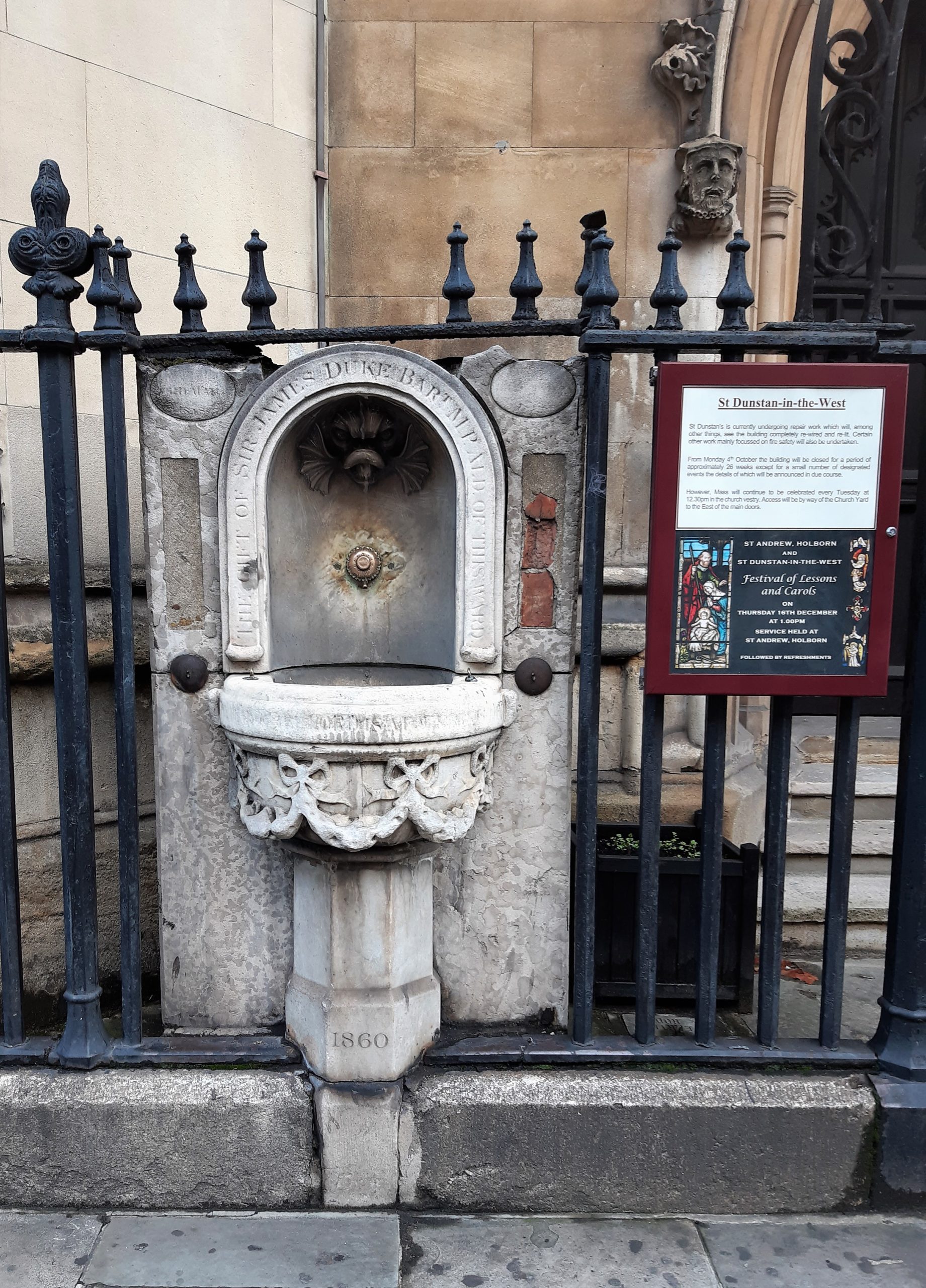
St Dunstan in the West – Drinking Fountain
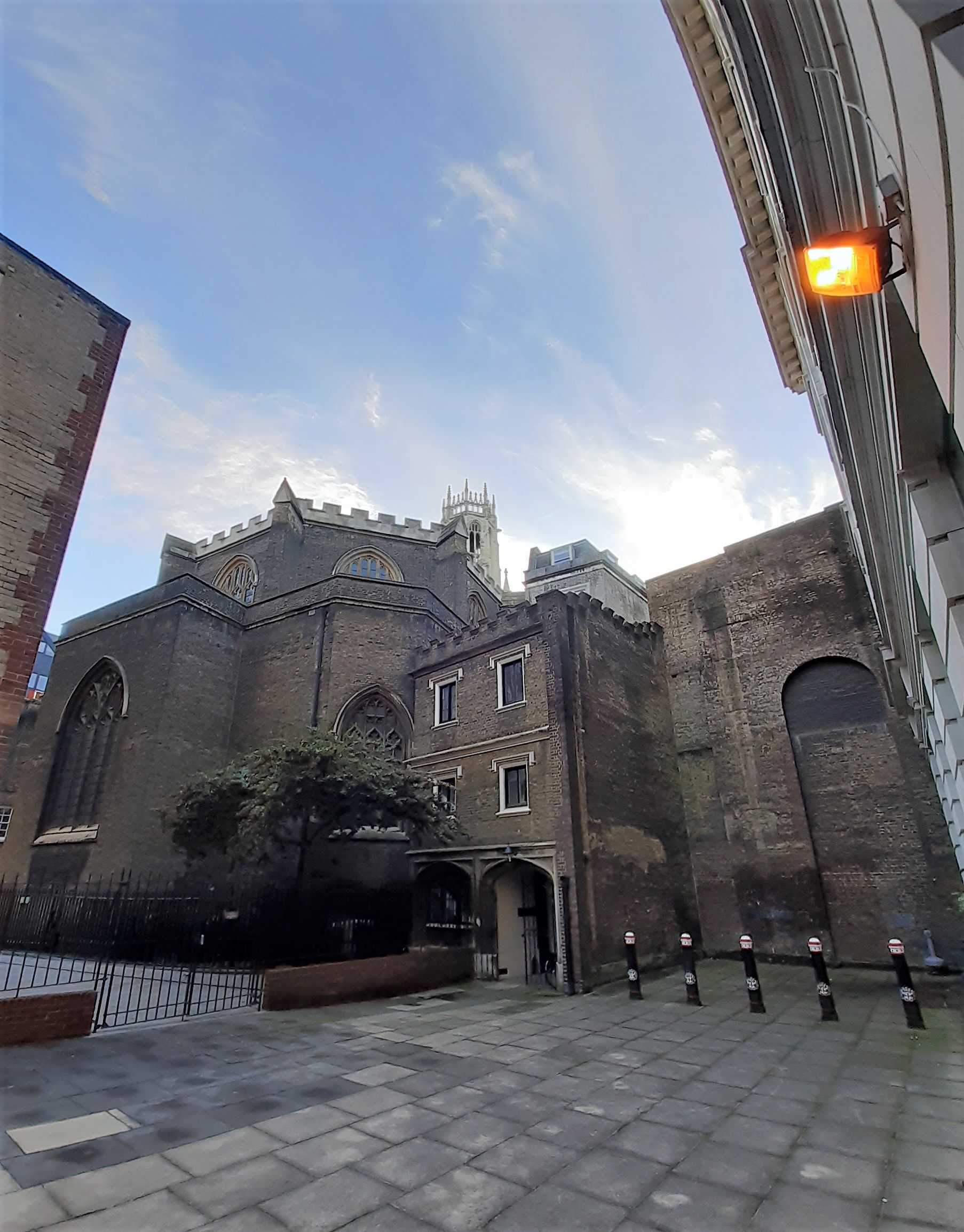
St Dunstan in the West – The rear from Clifford’s Inn
Back at ground level we see the drinking fountain unveiled in 1860 and designed by John Shaw Jnr (son of John Shaw and joint architect of the church). Clean drinking water was still a rare luxury and many churches provided public drinking fountains. The back panel is made of Welsh marble and the bowl, niche and pedestal are Italian marble. The inscriptions have weathered pretty badly. The writing over the arch reads ‘The gift of Sir James Duke Bart MP Ald of this Ward’. Around the basin is inscribed ‘The fear of the Lord is a fountain of life’. An oval plaque on the top left reads ‘Elected Lord Mayor 1848’ and an oval on the top right says ‘MP London 1849’.
The Church of St Dunstan and All Saints, Stepney High Street, London E1.
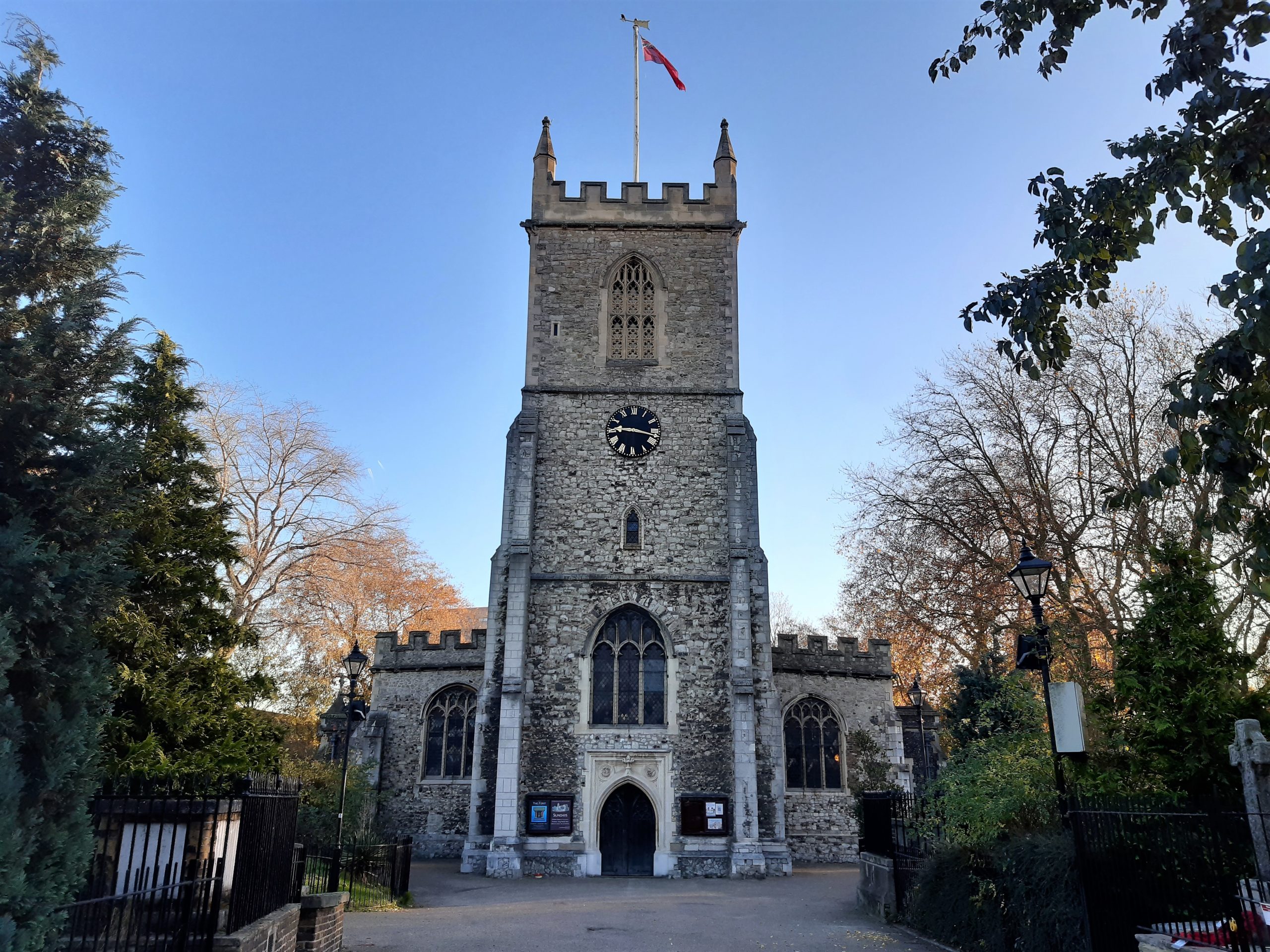
St Dunstan and All Saints, Stepney
It seems likely that a church has been on this on this spot for over 1000 years. The church of All Saints was rebuilt in the 10th century, probably by Dunstan, and renamed ‘St Dunstan and All Saints’ shortly after he had been canonised in 1029. The church is referred to as ‘The Mother Church of the East End’ and Bishops of London are also Lord of the Manor of Stepney. This was a rural area until well into the 18th century. From perhaps the 600s until 1550 the Bishop was a main freeholder and beneficiary of farm and property income deriving from the manor.
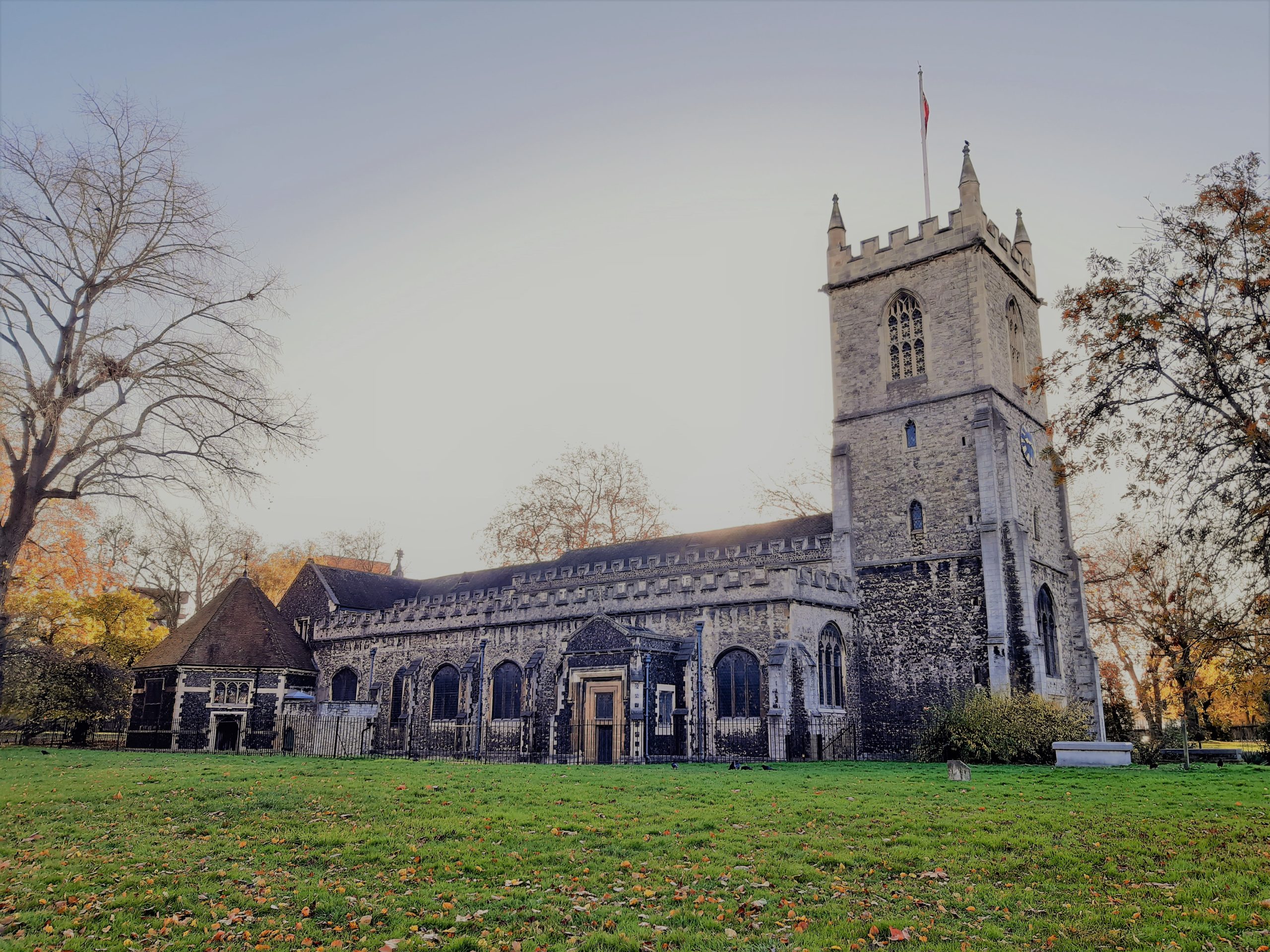
St Dunstan and All Saints, Stepney
The church we see today is an even later rebuild, mostly 15th century although the chancel is 13th century and the porch 19th century. Refurbishment took place just before and then after a serious fire at the beginning of the 1900s. The exterior walls have some lovely old stonework and flint facing and gargoyles mounted near the crenelations, probably to drain rainwater. The churchyard covers almost seven acres and is a public garden.
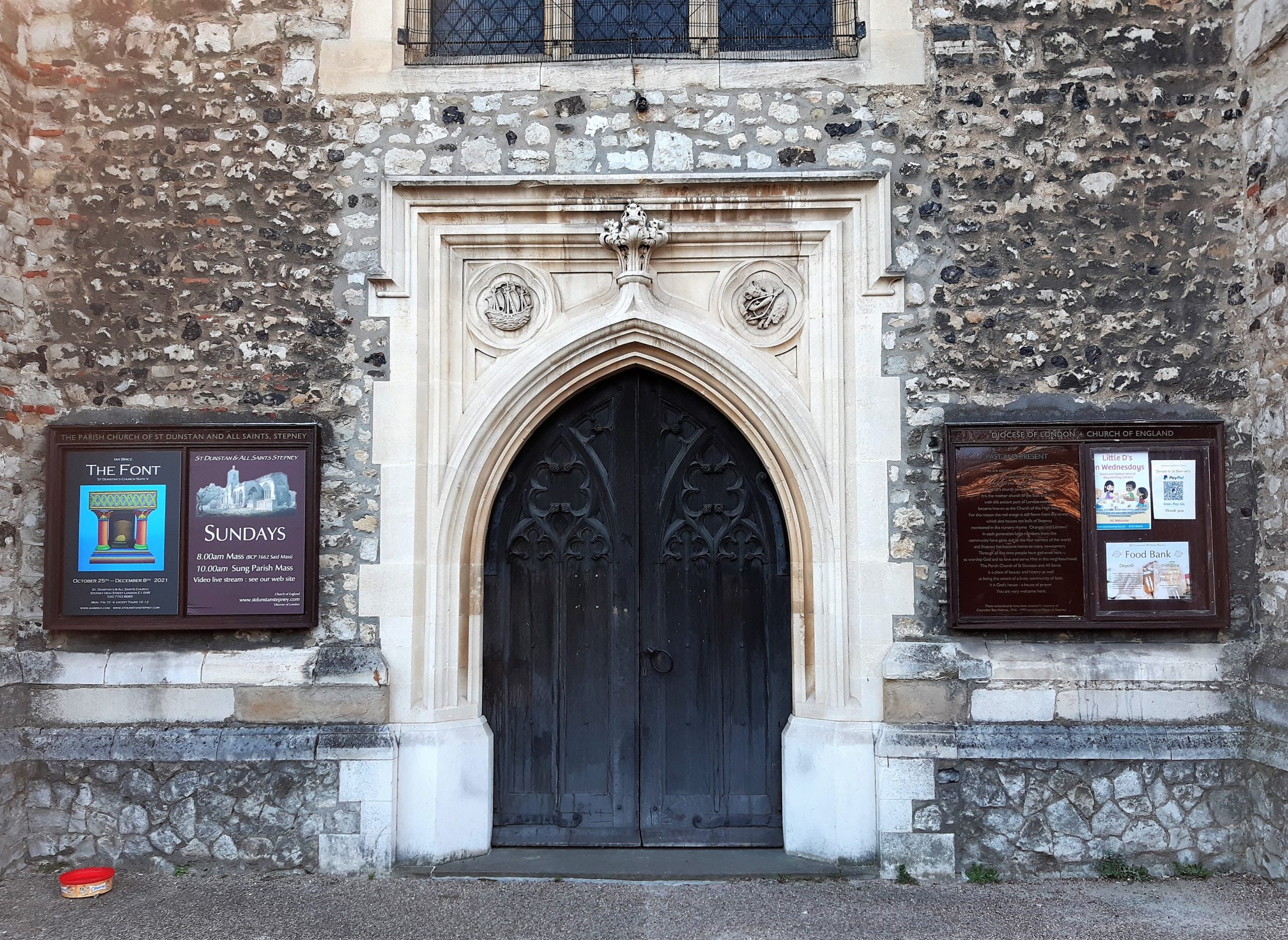
St Dunstan and All Saints, Stepney
The belfry has ten bells, all cast at the much-mourned Whitechapel Bell Foundry. They are mentioned in the nursery rhyme Oranges and Lemons: ‘When will that be, say the bells of Stepney.’
St Dunstan’s also has a long-established connection to seafaring and sailors – given its proximity to the docks – and was once called ‘The Church of the High Seas’. Many sailors were buried in the churchyard, although burials ceased in 1854 and most graves have been removed. The red ensign, the flag flown by British merchant and passenger ships since 1707, still flies over the tower. Above the west door are two stone carvings. On the left is a ship in full sail and on the right we see a carving of the devil and the red-hot tongs with which Dunstan – according to legend – pinched the devils nose (see Part 1).
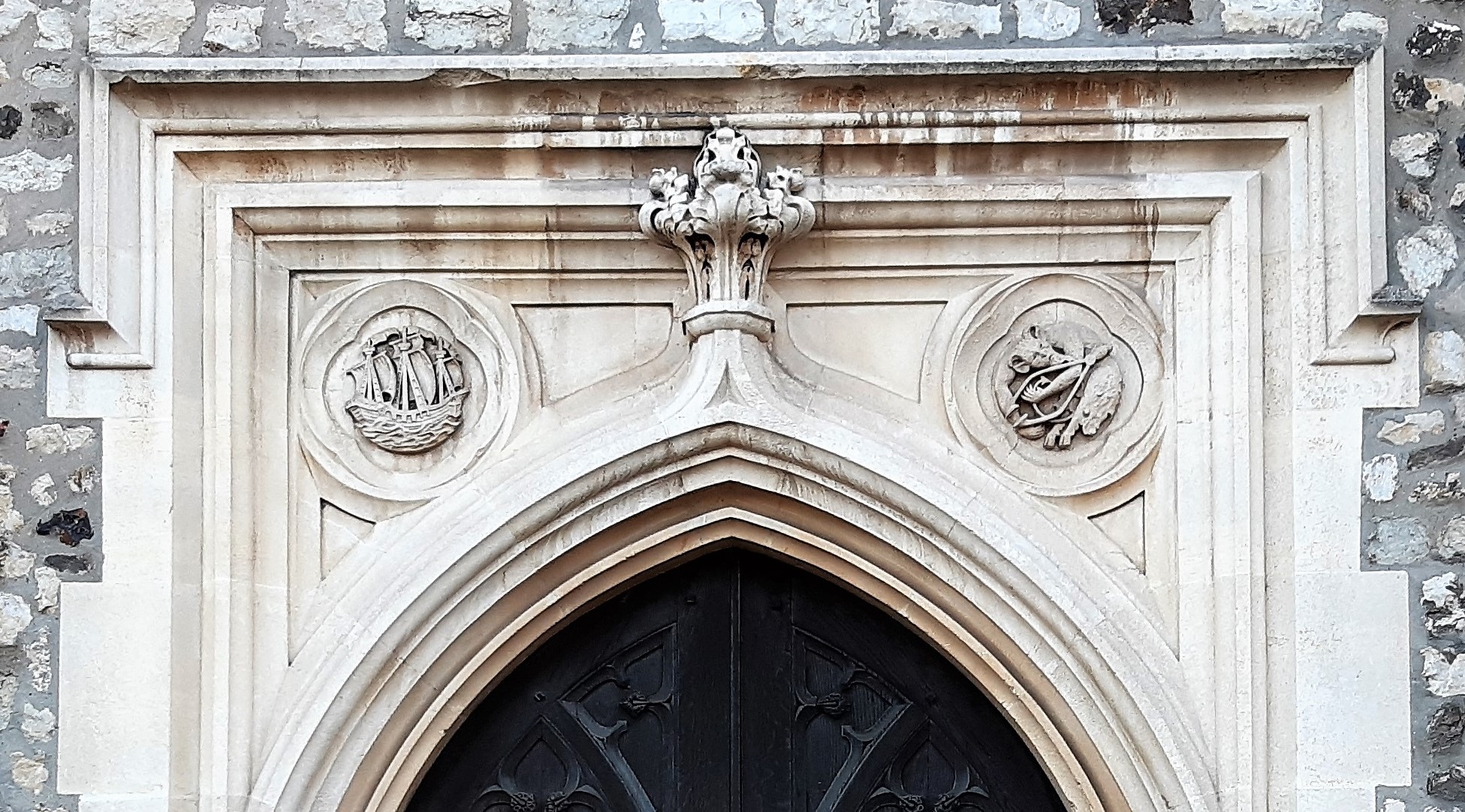
St Dunstan and All Saints, Stepney – West Door: Ship and Tongs
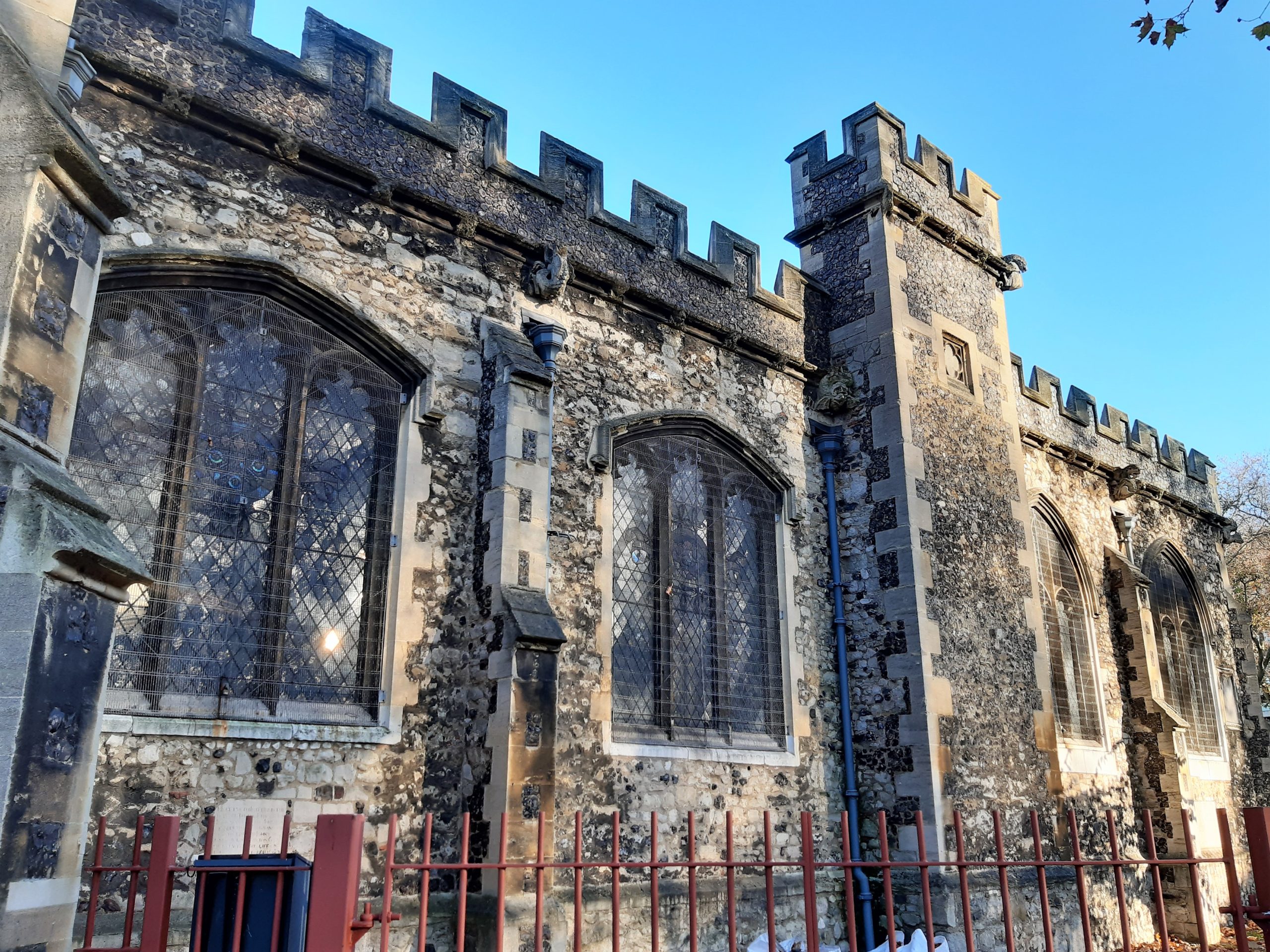
St Dunstan and All Saints, Stepney
